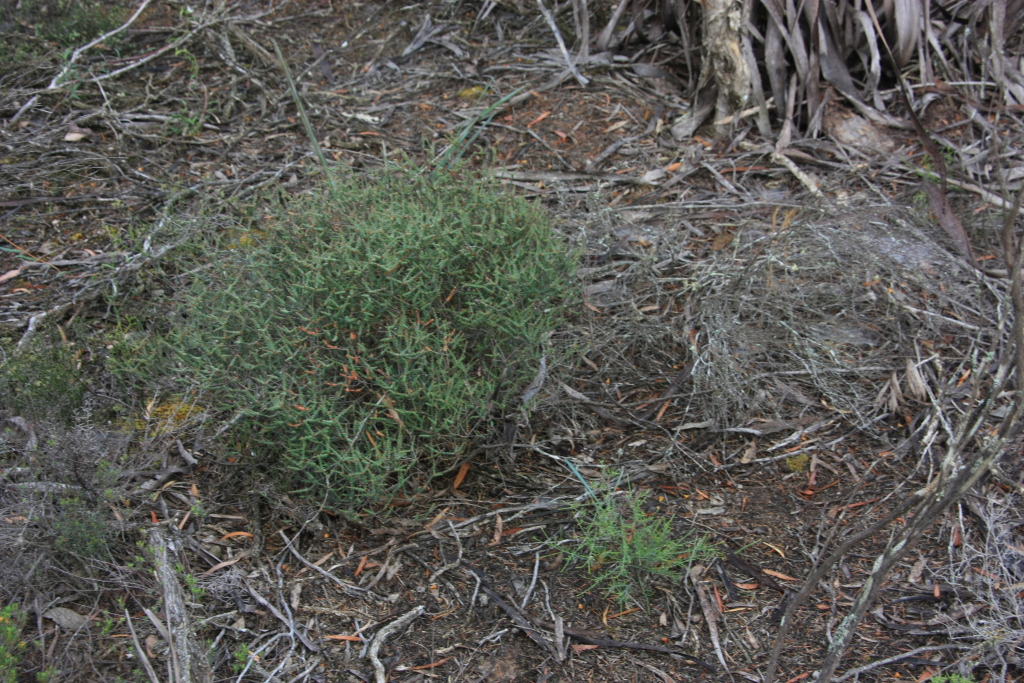Acrotriche depressa
R.Br. Wiry Ground-berryShrub to c. 80 cm high; branchlets puberulent-hispidulous. Leaves widely spreading or reflexed, triangular to ovate-lanceolate, 1.5–5 mm long, 1.5–3 mm wide, mucronate, base sometimes cordate, glabrous to scabrous above, lower surface glaucous with few subparallel veins, those furthest from mid vein with branches radiating to margin; margins slightly recurved, usually serrulate. Flowers in c. 15–30-flowered spikes clustered on branches toward base of plant; spike 15–30 mm long; bracteoles 1.1–1.2 mm long; sepals 2–2.6 mm long; corolla pale green; tube 2.4–2.9 mm long; lobes 1.1–1.3 mm long; ovary 2-locular, style c. 0.8 mm long. Fruit ovoid, 8–10 mm long, dark purple at maturity, densely puberulent.
LoM. also WA, SA. In South Australia A. depressa occurs in sclerophyll forest, mallee scrub and heath on limestone and sandy ironstone. This species was previously known in Victoria from 2 collections sometime in the late 1800s or early 1900s, with the locality given as "beyond the Wimmera", and it was presumed extinct. However, it was rediscovered in 2009 near Kaniva near the border with South Australia.
The above description is drawn largely from South Australian specimens.
Albrecht, D.E. (1996). Epacridaceae. In: Walsh, N.G.; Entwisle, T.J., Flora of Victoria Vol. 3, Dicotyledons Winteraceae to Myrtaceae, pp. 464–509. Inkata Press, Melbourne.
 Spinning
Spinning
